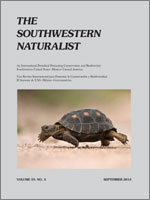Wildlife managers in the 21st century are challenged to maintain balance for wildlife and human use of the landscape. Because mountain lion (Puma concolor) habitat is often adjacent to urbanization in Arizona, mountain lions are ideal models to examine how human alteration of habitats influences life-history characteristics. We quantified mountain lion home-range characteristics and selection of vegetative associations in central and southern Arizona. We calculated 95% and 50% fixed kernel home ranges for eight female and 21 male mountain lions radiocollared in Payson, Prescott, and Tucson, Arizona, from August 2005 through August 2008. We assessed use of vegetative associations and urban areas within the study area (second order) and within the home range (third order). At both levels of selection at all study sites, mountain lions avoided human-dominated landscapes. At second-order selection, mountain lions preferred woodland habitat in Tucson and Prescott and chaparral in Payson. At the third order, lions in Tucson and Payson selected riparian and chaparral in Prescott. Season, mountain lion mass, and ungulate density had no effect on the size of home ranges. Home-range sizes for resident males ranged from 5,286 to 83,859 ha; transient males covered up to 409,195 ha. Home ranges for females ranged from 2,860 to 21,772 ha. Intensive development and conversion of large open spaces to small properties and subdivisions has caused increased loss, fragmentation, and encroachment into mountain lion habitat. Preserving natural landscapes for access to habitat patches is important in maintaining connectivity to ensure viable populations.
How to translate text using browser tools
1 September 2014
Mountain lion habitat selection in Arizona
Kerry L. Nicholson,
Paul R. Krausman,
Thorry Smith,
Warren B. Ballard,
Ted McKinney
ACCESS THE FULL ARTICLE

The Southwestern Naturalist
Vol. 59 • No. 3
September 2014
Vol. 59 • No. 3
September 2014




